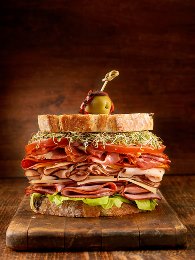••• insurance research
Insurance shoppers not filling in all the blanks
 A survey conducted by online insurance-shopping platform CoverHound found that 51 percent of quoted insurance shoppers provided inaccurate information either by accident or intentionally. Many shoppers requested a quote without providing correct information or forgot to include some important information to carriers. Millennials provided inaccurate information by accident or intentionally 6 percent more than their older, Baby Boomer counterparts. Homeowners were more accurate than renters, with renters being 4 percent more likely to omit or provide inaccurate information versus homeowners.
A survey conducted by online insurance-shopping platform CoverHound found that 51 percent of quoted insurance shoppers provided inaccurate information either by accident or intentionally. Many shoppers requested a quote without providing correct information or forgot to include some important information to carriers. Millennials provided inaccurate information by accident or intentionally 6 percent more than their older, Baby Boomer counterparts. Homeowners were more accurate than renters, with renters being 4 percent more likely to omit or provide inaccurate information versus homeowners.
Comparing shoppers self-reported as “currently insured” and “uninsured,” currently insured shoppers are 5 percent more likely to omit or provide inaccurate information either intentionally or by accident. CoverHound found only a small difference between lower- and higher-risk shoppers. Compared to lower-risk shoppers, only 2 percent more of the higher-risk shoppers omitted or provided inaccurate information either intentionally or by accident. Men and women were also the same: Nearly the same percent of male and female shoppers omitted or provided inaccurate information either intentionally or by accident.
••• food research
Our sandwich choices are changing
 Consumers eat an average of 3.7 sandwiches per week, which has remained stable over the past few years. However, consumers are now eating a wider variety of sandwiches and sourcing them from a greater variety of locations as they look for new, unique foods, according to the 2016 Sandwich Consumer Trend Report from Chicago researcher Technomic. While burgers are still consumed most often of all sandwich varieties measured, other varieties – including deli salad, breakfast, flatbread and ethnic sandwiches – are gaining on burgers.
Consumers eat an average of 3.7 sandwiches per week, which has remained stable over the past few years. However, consumers are now eating a wider variety of sandwiches and sourcing them from a greater variety of locations as they look for new, unique foods, according to the 2016 Sandwich Consumer Trend Report from Chicago researcher Technomic. While burgers are still consumed most often of all sandwich varieties measured, other varieties – including deli salad, breakfast, flatbread and ethnic sandwiches – are gaining on burgers.
In other findings, the rise of all-day breakfast is creating new opportunities for breakfast sandwiches: 27 percent of consumers say they are buying breakfast sandwiches outside of typical breakfast hours more often now than they were a year ago. Consumers increasingly demand mini sandwiches that they can eat as a snack (37 percent, up from 31 percent in 2012). And chain restaurants may benefit from differentiating sandwich offerings: 36 percent of consumers overall and 47 percent of Millennials think that chain restaurants all offer very similar sandwiches.
